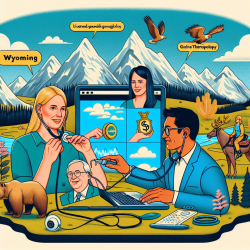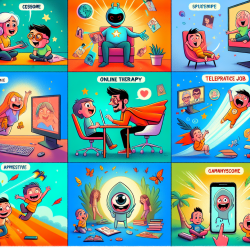Introduction
The cerebellum, traditionally recognized for its role in motor control, has emerged as a promising target for neurostimulation in treating a variety of neurological and neuropsychiatric conditions. This revelation is particularly significant for practitioners in special education and therapy services, such as those provided by TinyEYE, which offer online therapy to schools. The consensus paper titled "Consensus Paper: Experimental Neurostimulation of the Cerebellum" provides a comprehensive overview of the current understanding and future directions in cerebellar neurostimulation, highlighting its potential in addressing conditions like ataxia, dystonia, essential tremor, Parkinson’s disease, epilepsy, stroke, multiple sclerosis, autism spectrum disorders, dyslexia, ADHD, and schizophrenia.
Key Findings and Implications
The research underscores the cerebellum's involvement in both motor and non-motor functions, suggesting that its stimulation could alleviate symptoms of various conditions. The paper discusses advanced techniques for manipulating cerebellar circuits in humans and animal models, including deep brain stimulation (DBS), transcranial magnetic stimulation (TMS), and optogenetics. These methods have shown promise in modulating cerebellar activity to improve motor coordination, balance, and even cognitive functions.
For practitioners, this research highlights the potential of cerebellar stimulation as a therapeutic intervention. By integrating these findings into practice, therapists can explore new avenues for treatment, particularly for students with neurological disorders that are resistant to traditional therapies. This could involve advocating for or participating in clinical trials, staying informed about technological advancements, and considering non-invasive methods that could be adapted for online therapy settings.
Encouraging Further Research
The paper also identifies key hurdles and questions for future research, emphasizing the need for a deeper understanding of the mechanisms underlying cerebellar stimulation. Practitioners are encouraged to engage with ongoing research efforts, contribute to data collection, and collaborate with researchers to refine therapeutic techniques. This collaborative approach can enhance the efficacy of online therapy services by incorporating cutting-edge research into practical applications.
Conclusion
As the field of neurostimulation evolves, practitioners have a unique opportunity to improve their skills and expand their therapeutic repertoire by integrating the latest research findings. The insights from the consensus paper can serve as a foundation for developing innovative treatment strategies that leverage the cerebellum's potential in addressing complex neurological conditions. By staying informed and engaged with the research community, practitioners can ensure they are providing the most effective and up-to-date care for their students.
To read the original research paper, please follow this link: Consensus Paper: Experimental Neurostimulation of the Cerebellum.










